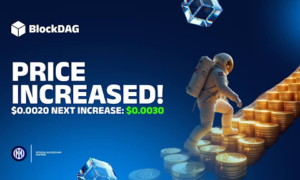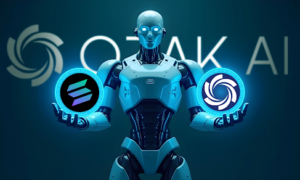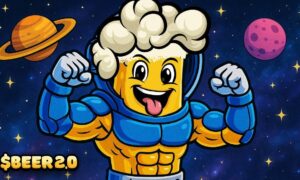Solana is quickly becoming one of the most popular blockchain platforms in the world due to its scalability, high throughput, and low transaction costs. As more developers turn to Solana to build decentralized applications (dApps) and services, there is an increasing demand for learning how to develop on this platform. Whether you’re just starting out or aiming to master advanced concepts, this Solana development full guide will take you through everything you need to know to become a Solana developer.
Introduction to Solana Development
Solana is a high-performance blockchain known for its speed and scalability. Its main goal is to make a decentralized, safe, and scalable place for building apps so that transaction costs are low and networks aren’t crowded. Solana’s innovative features like Proof of History (PoH) and its unique consensus mechanism make it an excellent choice for developers looking to create next-gen applications, from finance and gaming to decentralized exchanges (DEXs) and NFTs.
If you’re looking to dive into Solana development, it’s important to have a basic understanding of blockchain principles, smart contracts, and decentralized networks. Once you’ve grasped the basics, you can start learning how to build on Solana.
Setting Up Your Solana Development Environment
The first step in Solana development is setting up your local development environment. Here are some essential tools you’ll need:
- Rust Programming Language: Solana smart contracts (called “programs”) are primarily written in Rust. People know this system’s computer language for how fast and safe it is with memory. If you are new to Rust, you’ll need to start with basic tutorials before jumping into Solana-specific development.
- Solana CLI (Command-Line Interface): Solana CLI is essential for interacting with the Solana blockchain, deploying programs, managing wallets, and interacting with accounts. You can install it through the command line using specific installation commands depending on your operating system.
- Anchor Framework: For Solana smart contracts, the Anchor framework provides an easier way to write, deploy, and interact with on-chain programs. Anchor simplifies the process and reduces the boilerplate code needed to create decentralized applications.
- Solana Devnet: Solana provides a Devnet where you can test your applications without using real tokens. This environment allows you to experiment and build your programs without the risk of losing real assets.
Building Your First Solana Program
Once you’ve set up your environment, it’s time to start coding your first Solana program. Solana programs are written in Rust, compiled to the Berkeley Packet Filter (BPF), and executed on the network. Let’s break down the process:
- Create a new Rust project: Start by creating a new Rust project where you’ll write your program code. Use the cargo tool to create a new Solana program directory.
- Write the smart contract: The contract you write will define the logic that your application will run. Solana programs can handle various functions, from token transfers to interacting with decentralized finance (DeFi) protocols.
- Deploy your program: After writing your contract, you can deploy it to Solana’s Devnet for testing. This allows you to check if your code is functioning correctly before you launch it to the mainnet.
- Interact with your program: Solana’s CLI allows you to send transactions to your program and test its functionality. You can also integrate frontend code to interact with your backend program and build user-friendly applications.
Advanced Solana Development Techniques
After you’ve built some basic programs, you may want to explore more advanced topics in Solana development. Here are a few techniques to take your skills to the next level:
- Token Creation and Management: Solana supports the creation of custom tokens. You can create a token for your application and manage its distribution through your program. The SPL (Solana Program Library) provides tools for token management, and you can also create a decentralized exchange (DEX) for token swaps.
- Using Solana for NFTs: Solana has become a prominent platform for NFTs (Non-Fungible Tokens). With Solana’s low transaction fees and high speed, it’s ideal for launching NFT projects. You can create minting and trading programs to enable users to mint, buy, and sell NFTs directly on the Solana blockchain.
- Integrating with DeFi Protocols: Solana’s fast transaction speed and low fees make it an excellent platform for decentralized finance (DeFi) applications. You can integrate your Solana programs with lending, borrowing, and staking platforms to build sophisticated financial applications.
- Optimizing for Performance: One of Solana’s core advantages is its performance. As a developer, understanding how to optimize your code to maximize Solana’s throughput is essential. Techniques like reducing transaction size and minimizing the number of instructions in a program can lead to faster and more efficient applications.
How to Become Solana Developer
Becoming a Solana developer requires practice and a deep understanding of both the platform and the broader ecosystem of blockchain technology. Here are some steps to help you on your journey:
- Learn Rust: Since Solana development relies on Rust, mastering this programming language is essential. There are many resources online to help you get started with Rust.
- Build Projects: Start with small projects, such as simple token creation or smart contracts, and gradually work your way up to more complex dApps and integrations.
- Contribute to the Community: Solana has an active developer community. You can improve your skills as a Solana developer by participating in hackathons, joining groups, and making changes to open-source projects.
- Stay Updated: Things change quickly in the bitcoin space. To make sure your skills stay useful, keep up with the newest features and changes to Solana.
Conclusion
Solana offers immense potential for developers looking to create scalable and high-performance blockchain applications. Whether you’re just starting out with Solana or aiming to deepen your knowledge, this Solana development full guide should provide you with the tools and techniques needed to become a Solana developer. When it comes to Solana’s development, there is a lot to learn and discover. You can set up your surroundings and learn more about advanced topics like DeFi and NFTs. The possibilities are endless, and with the right knowledge and persistence, you can build powerful applications on one of the fastest-growing blockchain platforms.


































